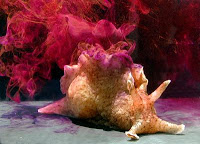Years ago, “epigenetics” was largely synonymous with methylation — in particular, 5-methylcytosine, which could be analyzed through bisulfite sequencing. Today, technologies have advanced and so has our understanding of the biological mechanisms underlying epigenetics. Scientists are continually adding to the repertoire of methylation patterns and how they function, from virulence effects in microbes to DNA replication and new methylation marks in plants.
Here at AGBT, the conference kicked off with some excellent talks focusing on epigenetics. In one, Leonid Moroz, a professor of neuroscience at the University of Florida, talked about the challenges of determining the biological function behind memory persistence. In his fast-paced and fascinating talk, Moroz presented data on the sea slug, which serves as a useful model because it has the largest known neurons. One of the highlights from his findings is that every neuron is unique, and the molecules interacting with them at any given time are numerous and complex. Moroz used SMRT Sequencing to determine that a certain demethylation pattern only happens on one strand of DNA as memories were processed by neurons.
In another talk, Ross Hardison, professor of biochemistry and molecular biology at Pennsylvania State University, posed this question: “(Epi)Genomics and Mammalian Gene Regulation: Are We There Yet?” Hardison, who is also an ENCODE member, discussed the importance of using epigenetic data in understanding gene regulation, which he said lies at the heart of developmental biology and probably speciation as well. He cited the many variants found through genome-wide association studies that are located in non-coding regions, and noted that this underscores the value of adding methylation patterns and other epigenomic data to improve our understanding of disease. As an example of how SMRT Sequencing enables detection and identification of chemically modified DNA bases, see this case study of Eric Schadt’s work using the PacBio RS to characterize the E. coli strain responsible for the severe outbreak in Germany in 2011.
